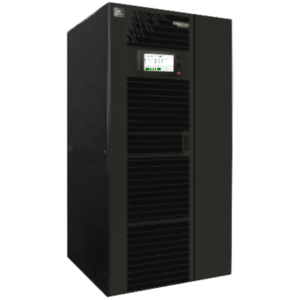
- Oct 10, 2020
- ARC Infotech
- Uncategorized
- 0 Comments
An isolation transformer is a transformer used to direct power from a source of alternating (AC) (and not direct current or DC) to some equipment or device while isolating the powered device from the power source, making appliances safer and thus efficient for longer and facilitating uninterrupted power supply.
Disturbances in the waveforms of voltage and current are known as harmonics. When components are out of phase with the line voltage (the products of voltage and current represent reactive Volt Amperes) the harmonic currents interact with the mains power source impedance and line voltage distortion occurs. Isolation transformers protect your appliances from generating such dangerous harmonics that cause increased heating in conductors and equipment. Isolation transformers decrease the current waveform distortion and improve power quality. They also prevent these harmonics from trickling downstream to more sensitive loads.
Why do I need an isolation transformer with a UPS? How does it help the UPS system?
UPS systems operate by sampling input waves and providing smooth, clean power at the output.
Isolation transformers can be used to isolate downstream loads (below the UPS itself) from dangers originating at the distribution bus. In such cases, the bypass connection is to be examined closely, because it is typically used as a direct, alternate path to the load. When in bypass mode, any changes on the bus can have direct consequences on the load. But if an isolation transformer is installed between the bus and the UPS, then both the UPS and the load are isolated from the bus. In fact, even in bypass mode, changes to the bus will not reflect on either the load or the UPS.
Some other reasons why isolation transformers are necessary for UPS units are:
- The UPS supply may operate on a high resistance grounding system, and loads require solid grounding. In this case an isolation transformer ensures safe and smooth operations.
- The output of the UPS may be at a different voltage than the loads. To make sure that connected loads receive the right boltage, a step up or step down isolation transformer is applied. Thus an isolation transformer acts as a voltage regulator.
- Fault current supply for downstream equipment is controlled by the transformer, preventing leakage and flux.
- Since isolation transformers can be connected externally to the UPS system, upkeep and maintenance of the UPS becomes extremely easy. Separation of the UPS and the power source reduces the danger of electrical shocks during testing or administration of the UPS. Consequently it guarantees the security of the technicians upkeeping the UPS system.
What are the differences between a UPS system with and without an isolation transformer? What advantages do UPSs with isolation transformers have over those that don’t?
UPS systems that use isolation transformers have many advantages over transformer-free ones:
- Isolation transformers add to the strength of the UPS system.
- They help in WYE (4-wire + neutral) distribution.
- They safeguard High-Resistance Grounding systems. (HRG systems)
- They facilitate isolation of input, DC and output.
- They increase the versatility of the UPS.
- They are efficient and reliable.
What are the typical applications of isolation transformers?
In and around highly sensitive equipment, electric and magnetic fields cause disturbances (electromagnetic interferences) called ‘noise.’ When using highly sensitive equipment like heart monitors in hospitals, noise from other instruments on the grid can interfere with their working and cause highly disastrous consequences. To prevent such accidents, isolation transformers are absolutely necessary and are connected directly to the monitoring systems even before they are connected to the UPS system. Isolation transformers ensure that even the most minute errors are prevented and thus result in reliable, precise and life-saving application in medical systems.
In industrial applications too, isolation transformers are essential for the aforementioned reasons. Additionally they prevent leakage of harmonics into utility supply lines to the equipment of other users. Thus an isolation transformer is an essential tool for UPS in industries. What is an isolation transformer and what is it used for?
In data centre UPS systems isolation transformers have especially varied uses, from regulating abnormally high or low mains voltage, helping the work of the power conversion circuits to isolating the neutral from the source, which is very important as it is a legal requirement in many states.
Isolation transformers are helpful in computer network design. In this case the isolation transformer acts as a Pulse Transformer.
Applied in electrical circuits, isolation transformers provide protection against electric shocks.
Isolation transformers are also capable of noise and power surge reduction. This makes
In data centre UPS systems isolation transformers have especially varied uses, from regulating abnormally high or low mains voltage, helping the work of the power conversion circuits to isolating the neutral from the source, which is very important as it is a legal requirement in many states.
Isolation transformers are helpful in computer network design. In this case the isolation transformer acts as a Pulse Transformer.
Applied in electrical circuits, isolation transformers provide protection against electric shocks.
Isolation transformers in UPS are also capable of noise and power surge reduction. This makes them a great fit for appliances that need high-quality power supply for operating efficiently.
Apart from these, isolation transformers are necessary for:
- Edge Networks
- Data Centers
- Analytical instruments
- Server Farms
- Workstations
- Telecom
- Hospitals









